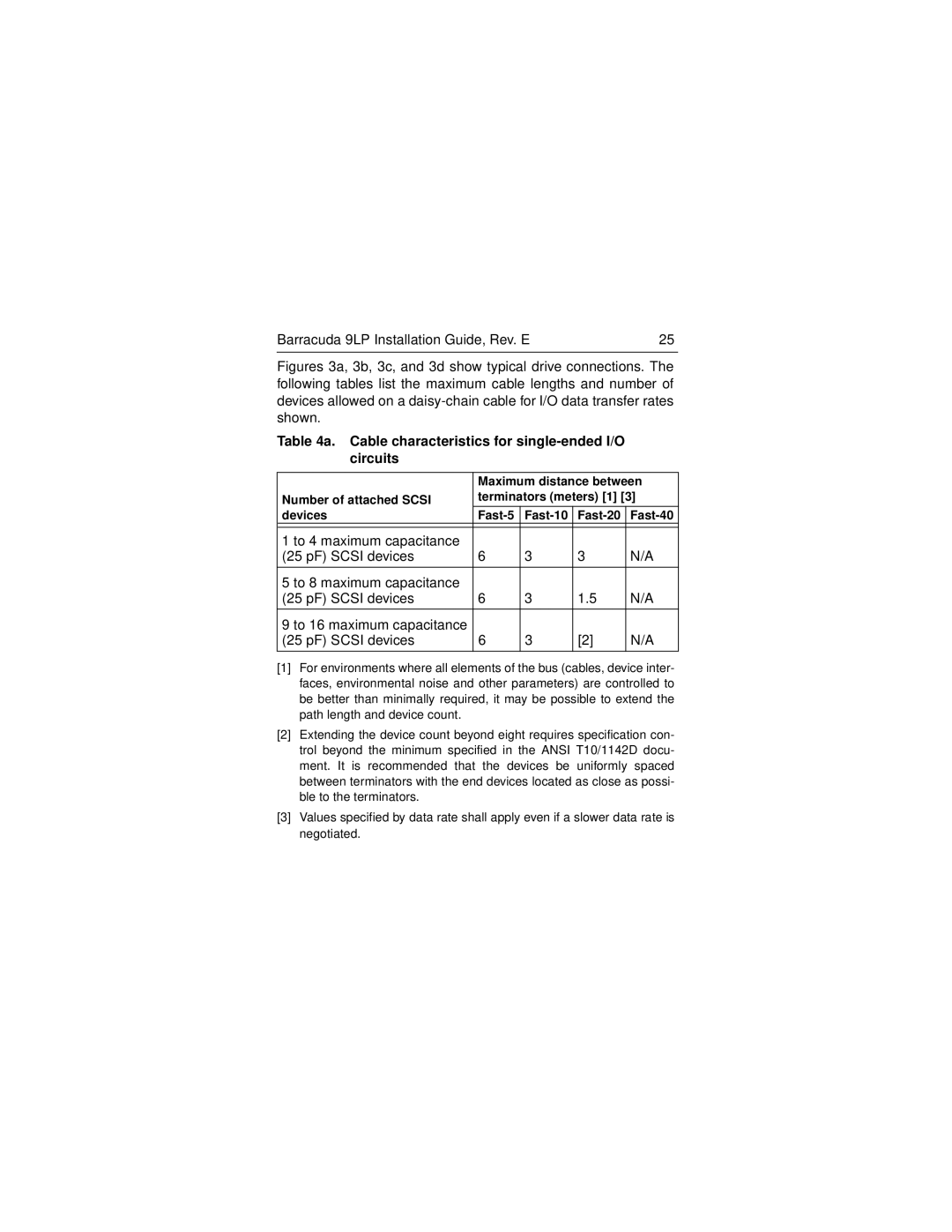Barracuda 9LP Installation Guide, Rev. E | 25 |
Figures 3a, 3b, 3c, and 3d show typical drive connections. The following tables list the maximum cable lengths and number of devices allowed on a daisy-chain cable for I/O data transfer rates shown.
Table 4a. Cable characteristics for single-ended I/O circuits
| Maximum distance between | |||
Number of attached SCSI | terminators (meters) [1] [3] | |||
devices | ||||
|
|
|
|
|
1 to 4 maximum capacitance |
|
|
|
|
(25 pF) SCSI devices | 6 | 3 | 3 | N/A |
|
|
|
|
|
5 to 8 maximum capacitance |
|
|
|
|
(25 pF) SCSI devices | 6 | 3 | 1.5 | N/A |
|
|
|
|
|
9 to 16 maximum capacitance |
|
|
|
|
(25 pF) SCSI devices | 6 | 3 | [2] | N/A |
|
|
|
|
|
[1]For environments where all elements of the bus (cables, device inter- faces, environmental noise and other parameters) are controlled to be better than minimally required, it may be possible to extend the path length and device count.
[2]Extending the device count beyond eight requires specification con- trol beyond the minimum specified in the ANSI T10/1142D docu- ment. It is recommended that the devices be uniformly spaced between terminators with the end devices located as close as possi- ble to the terminators.
[3]Values specified by data rate shall apply even if a slower data rate is negotiated.
